It's interesting to speculate that Tarzan
of the Apes might have held greater weight in the literary world
had Edgar Rice Burroughs not written a sequel. John Clayton, Lord
Greystoke's renunciation of his title and his lovely Jane would have thus
become a permanent fact of literary history and in a sense more tragic
had not the second, happy-ending novel been written.
Of course it's difficult to think of a writer's work in this way,
for the novel was in fact written, along with a score of others, yet at
this late date we assume the inevitability of this fact, although the author
wrote each book with the possibility of each one being the last.
(The fact is, Burroughs grew to hate writing yet another chapter in his
Tarzan series, but since it brought in certain income, he continued to
write them with a great variety of literary quality until the end of his
life.)
It's not that there isn't a wealth of new information about Tarzan
in his Return.
In some ways it's the most eventful novel in the series because it sets
up the rest of the stories in ways that go beyond even Tarzan
of the Apes itself. In Return,
Tarzan visits civilization and evolves into more than a simple ape-man;
here he becomes the head of a savage tribe of African warriors, the Waziri,
and he meets La of Opar in her treasure city for the first time.
All of these themes are exploited in the later novels in great detail.
Who are the Waziri?
The Waziri are tribal natives who fell victims to Arab slavers.
They are fierce warriors, elephant hunters who collect and sell ivory.
Tarzan is made king of the tribe because their king is killed even as Tarzan's
plan to drive away the slavers is successful. The Waziri are enemies
of the Manyuema, for whom they hold a peculiar hatred. Waziri have
symmetrical features, not the flat noses and thick lips of the typical
West Coast savage. The faces of the men are intelligent and dignified,
those of the women oftimes prepossessing. They wear anklets and armlets
made of gold. They seem to be a rather small tribe that live within
a single palisaded village. (Burroughs, 175)
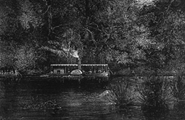
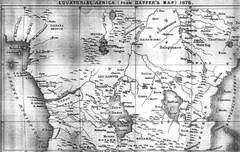
Given ERB's frequent use of Stanley's writings as a source for his
early Tarzan novels, it's instructive to discover the Manyema in his Through
the Dark Continent. Here perhaps is the source of ERB's sworn
enemies of the Waziri, although through his habit of turning things around,
the Manyema appear to be rather a description of the Waziri themselves.
Stanley notes that in the Manyema "a sudden improvement in the physiognomy
of the native had occurred. In the district of Uhombo we had seen
a truly debased negro type. Here we saw people of the Ethiopic negro
type, worthy to rank next the more refined Waganda" (Stanley, 63).
Their arms are a short sword scabbarded with wood and "a light, beautifully
balanced spear -- probably, next to the spear of Ugandas, the most perfect
in the world" (Stanley, 64). In truth, the Manyema are not the companions
of the Arab slavers as they are in Return; rather they are the victims.
Also, they are cannibalistic, and Stanley notes that even Livingstone finally
gave up on them, allowing his men to fire upon them because; "these men
are wicked." (Stanley, 68).


 The infamous slaver, Tippu-Tib, who accompanied Stanley upon part of
his journey, employed the Wangwana and Wanyamwizi to help round up slaves.
The name Waziri could very likely be one of ERB's name juxtapositions,
and, again, the reversal of alliances would be a normal practice in his
writing.
The infamous slaver, Tippu-Tib, who accompanied Stanley upon part of
his journey, employed the Wangwana and Wanyamwizi to help round up slaves.
The name Waziri could very likely be one of ERB's name juxtapositions,
and, again, the reversal of alliances would be a normal practice in his
writing.
Stanley gives over a good portion of his Volume 2 of Through the
Dark Continent to his visit to the Empire of Uganda and its Emperor,
Mtesa. His admiration for these people and their leader is profound,
and one must allow them at least a little influence on ERB in his creation
of the Waziri. These are the Waganda people who do indeed live in
conical huts behind a palisaded village at Mtesa's capitol, but the total
empire is huge inclosing an area of 30,000 square miles and nearly 3 million
people. The Waganda are a tall and slender people, many men over
6 feet in height; they are of superior intelligence; and their spears are
"the most perfect in Africa." (Stanley, 321). Stanley notes that
Mtesa can float a force in canoes of from 16,000 to 20,000 warriors on
Lake Victoria for purposes of war. He does not mention that they
are in any way threatened by slavers.
The fictional Waziri are at least the spiritual descendants of the
Waganda simply because they are such a splendid people. Stanley devotes
an entire chapter to their history, which in its legendary nature could
have appealed to Burroughs enormously.
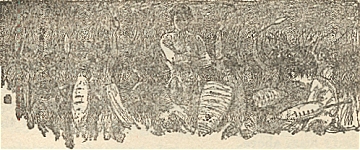
Kintu, the first King of Uganda, came from the north, perhaps from
an ancient Ethiopic family. He was the priest of some old and long
forgotten order who brought the banana plant to Uganda along with the sweet
potato. He had four sons who were born with incipient beards and
the powers of lusty prime youth. (After Stanley introduced Mtesa
to the Bible, he thought Kintu must have been Ham, one of the sons of Noah.)
When his sons became wicked, Kintu went away, and the new king, Chwa spent
his whole life looking for him, as did his son and successor, Kamiera.
Kamiera was succeeded by his gigantic son Kimera, the hunter, who first
introduced dogs to the chase. He was so large that his feet made
marks in rocks when he walked along. He also looked for Kintu, whom
everyone thought was immortal. There were many kings to follow, including
Kibaga, who possessed the power of flying. He fought his enemies
by dropping stones on them from the air, but was shot down by an
arrow when his unfaithful wife Delilah-like let out the secret. These origin
myths and folk tales continue for 28 fascinating pages.
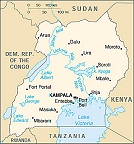 Of course, the "Lady Alice," Lord Tennington's yacht in Return
was named after Stanley's forty-foot steel boat which had been built
in sections so that it could be carried overland when necessary during
his second African journey described in Through
the Dark Continent.
Of course, the "Lady Alice," Lord Tennington's yacht in Return
was named after Stanley's forty-foot steel boat which had been built
in sections so that it could be carried overland when necessary during
his second African journey described in Through
the Dark Continent.
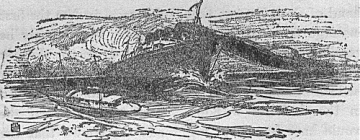
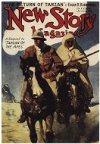
Bibliography




![]()
![]()
![]()
![]()
